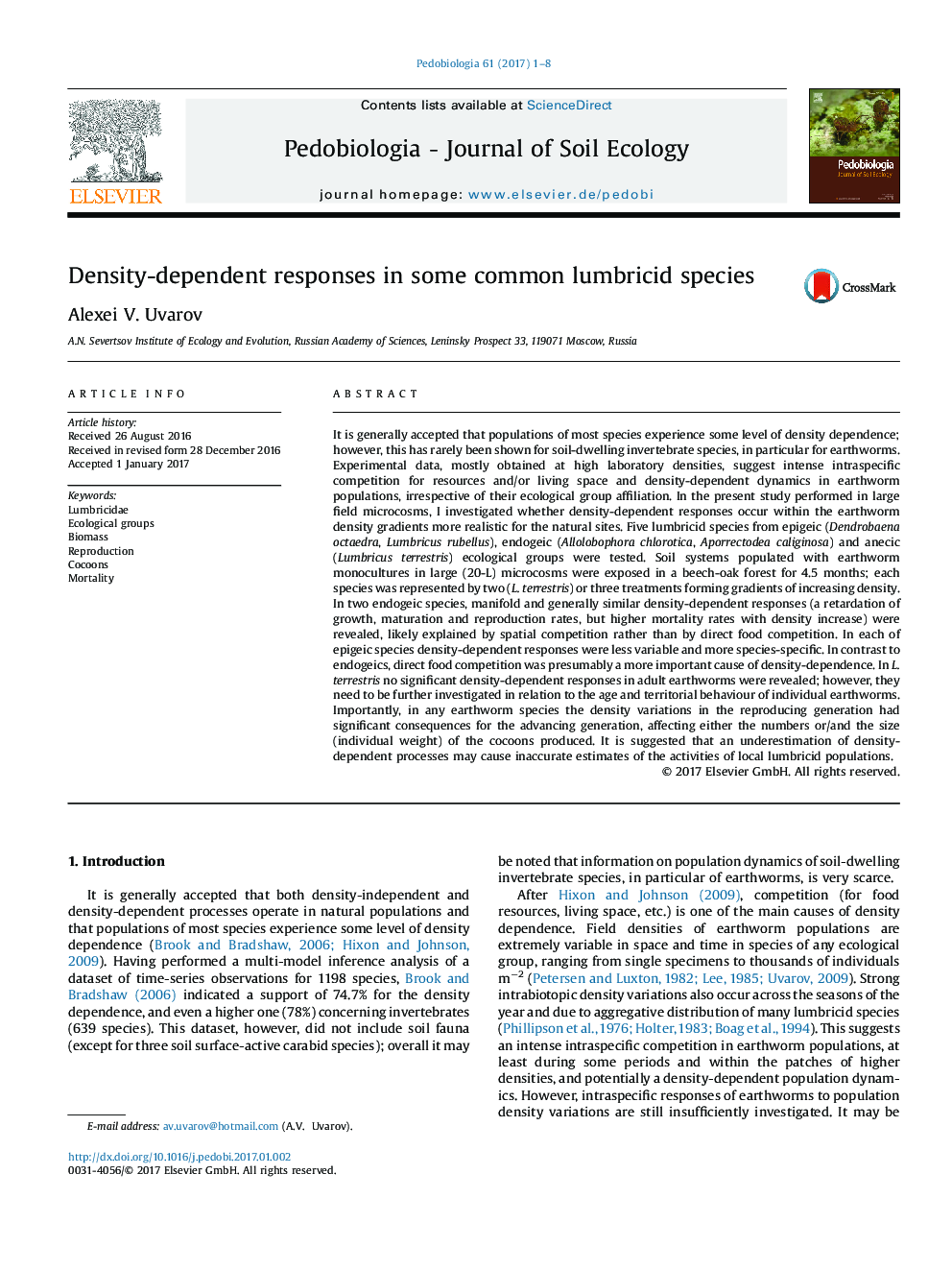| کد مقاله | کد نشریه | سال انتشار | مقاله انگلیسی | نسخه تمام متن |
|---|---|---|---|---|
| 5518739 | 1544021 | 2017 | 8 صفحه PDF | دانلود رایگان |
- At field densities, populations of various earthworm species experience density dependence.
- In epigeic species, food competition was likely an important cause of density dependence.
- In endogeic species, density dependence was caused by spatial rather than food competition.
It is generally accepted that populations of most species experience some level of density dependence; however, this has rarely been shown for soil-dwelling invertebrate species, in particular for earthworms. Experimental data, mostly obtained at high laboratory densities, suggest intense intraspecific competition for resources and/or living space and density-dependent dynamics in earthworm populations, irrespective of their ecological group affiliation. In the present study performed in large field microcosms, I investigated whether density-dependent responses occur within the earthworm density gradients more realistic for the natural sites. Five lumbricid species from epigeic (Dendrobaena octaedra, Lumbricus rubellus), endogeic (Allolobophora chlorotica, Aporrectodea caliginosa) and anecic (Lumbricus terrestris) ecological groups were tested. Soil systems populated with earthworm monocultures in large (20-L) microcosms were exposed in a beech-oak forest for 4.5 months; each species was represented by two (L. terrestris) or three treatments forming gradients of increasing density. In two endogeic species, manifold and generally similar density-dependent responses (a retardation of growth, maturation and reproduction rates, but higher mortality rates with density increase) were revealed, likely explained by spatial competition rather than by direct food competition. In each of epigeic species density-dependent responses were less variable and more species-specific. In contrast to endogeics, direct food competition was presumably a more important cause of density-dependence. In L. terrestris no significant density-dependent responses in adult earthworms were revealed; however, they need to be further investigated in relation to the age and territorial behaviour of individual earthworms. Importantly, in any earthworm species the density variations in the reproducing generation had significant consequences for the advancing generation, affecting either the numbers or/and the size (individual weight) of the cocoons produced. It is suggested that an underestimation of density-dependent processes may cause inaccurate estimates of the activities of local lumbricid populations.
Journal: Pedobiologia - Volume 61, March 2017, Pages 1-8
